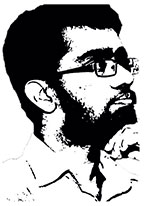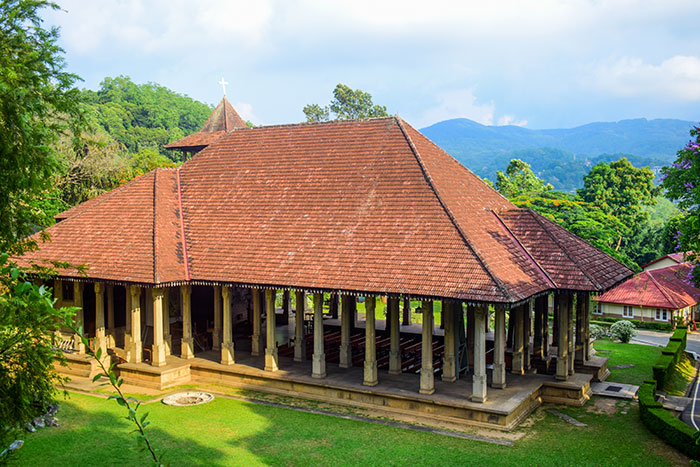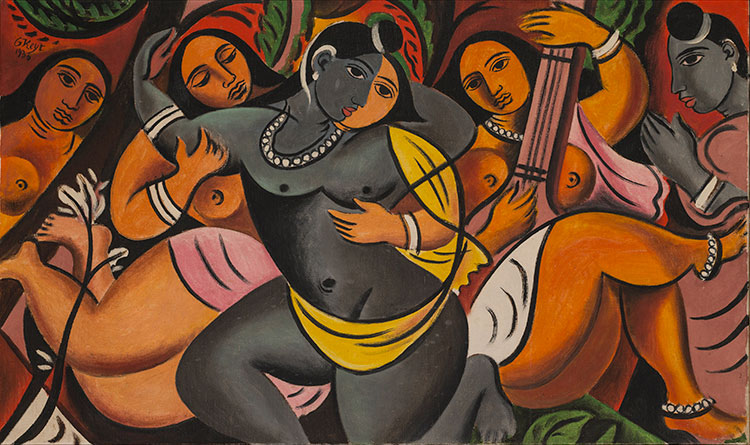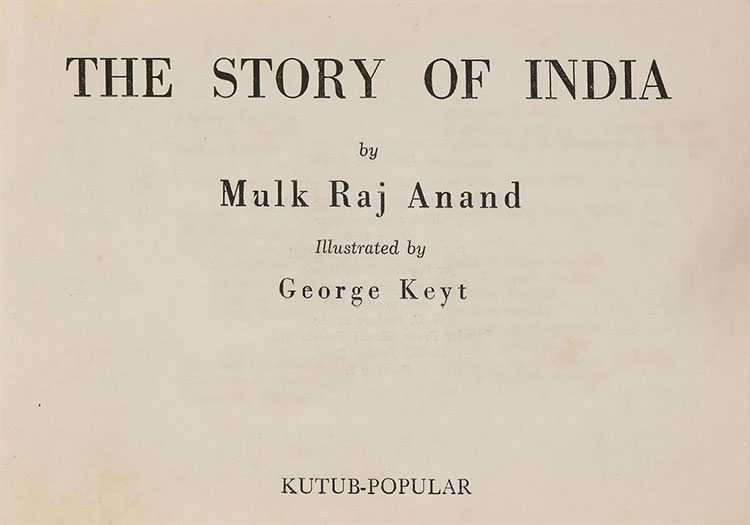Searching for George Keyt-By Uditha Devapriya
Source:Island
Image Source:Island
George Keyt, Sri Lanka’s most celebrated painter, died 30 years ago in 1993. During his life and after his death, he became the subject of several studies by Sri Lankan and foreign scholars. Today his paintings have found their way to some of the biggest art collections in his country, as well as to places like Christie’s and Sotheby’s.
Taken together, these paintings represent some of the finest examples of modern art in Sri Lanka and Asia. They have also become symbols of Asian modernism.
Born in 1901 in the mountainous region of Kandy, some 75 miles from Sri Lanka’s capital, Colombo, George Keyt hailed from a middle-class family that had become thoroughly Westernised and Anglicised. They belonged to the Burgher community, an ethnic group which traces its descent from the Portuguese and the Dutch.
By the 20th century the Burghers had acquired a distinct identity and were dominating professions such as law and medicine. They had acquired a respectable, if intermediate, social position, not unlike the Anglo-Indian community.
Keyt chose to reject this inheritance. Turning away from his Christian and Westernised upbringing, he embraced Buddhism and learnt Sinhalese, the language of Sri Lanka’s ethnic majority, along with Pali and possibly Sanskrit, from Buddhist monks. Refusing to conform to the lifestyle of his peers, he immersed himself in the culture of his land.
Keyt attended Trinity College, the leading school in Kandy, founded by Anglican missionaries in the 19th century. At Trinity he acquired a rather notorious reputation. He found lessons boring and was constantly punished by his teachers for not paying attention. Yet he read widely and was encouraged to read by its principal, Alexander Garden Fraser. A highly unorthodox educationist and something of a nonconformist, Fraser took a great interest in Keyt and allowed him to visit the library. These interventions moulded Keyt.
While he sat in the school library poring over books, the world around him was changing fast. In 1908, seven years after Keyt was born, the Oriental scholar Ananda Coomaraswamy published his work on Kandyan culture, Mediaeval Sinhalese Art.
Keyt read Coomaraswamy’s book and was moved by his insights on Kandyan art and craft. He made it a point to visit the temples of Kandy and to observe their murals. Dismissed as inferior by cultural elites, in Coomaraswamy’s view these murals exemplified the patterns and beliefs of a simple people. For Keyt too they acquired a living relevance. Not surprisingly, in his first few essays and drawings, he focused on Buddhist themes.
Chapel, Trinity College Kandy / Photo by Author
In the 1940s Keyt discovered the art and culture of India. At the height of World War II, he travelled there, visited the shrines of Bhubaneswar and Konark, among other places, and forged connections with several Indian artists, including the novelist and activist Mulk Raj Anand and the painter M. F. Husain.
These friendships came to the fore in 1947, when Mulk Raj Anand brought together a group of like-minded personalities of the day to organise an exhibition of Keyt’s paintings at the Convocation Hall of the University of Bombay. These included the European émigrés Walter Langhammer, Rudolf von Leyden, and Emanuel Schlesinger; the nuclear physicist and Renaissance Man Homi Bhabha; the criminal lawyer Karl Khandalavala; the art collector and gallery owner Kekoo Gandhy; and the publisher Manu Thacker.
In his own country, he remained renowned to his last. He lived to see three acclaimed studies on him. In 1950 his close friend Martin Russell wrote George Keyt. It was published by Marg, the art and architecture magazine founded by Mulk Raj Anand.
In 1989 another close friend, the Sri Lankan bibliographer and librarian H. A. I. Goonetileke, published George Keyt: A Life In Art. Goonetileke’s book is concise, and it refers to Keyt’s earliest paintings, which have rarely been evaluated in relation to his wider career. Then, in 1991, the anthropologist Dr Sunil Goonesekera wrote a monograph on him, Intepretations, published by the Institute of Fundamental Studies in Kandy.
Russell, Goonetileke, and Goonesekera all had the chance to meet and converse with Keyt. So did Albert Dharmasiri, a painter-scholar who authored the most recent study, George Keyt: A Portrait of the Artist (National Trust of Sri Lanka, Colombo 2020). Yet perhaps the most comprehensive study on him was written by someone who never met him. In 2017 the Indian art historian Yashodhara Dalmia wrote Buddha to Krishna: Life and Times of George Keyt. Published by Routledge, it remains an indispensable guide to Keyt.
Impeccably researched as these books are, there is much about Keyt we have yet to find out. The image we have of Keyt is incomplete; there is a gread deal more we have to discover about his contribution to modern art, in not just Sri Lanka, but also India.
Rasa Lila / Oil on Canvas / 1936 / 59.5 x 102 cm / Taprobane Collection
George Keyt: The Absence of a Desired Image (Taprobane Collection, Colombo 2024) is the latest in what is clearly a bourgeoning literature on Keyt. Written by Dr SinhaRaja Tammita-Delgoda, a leading art historian, the study examines Keyt’s childhood, his engagement with Buddhism and Sinhala culture, and his later immersion in Hinduism. It is an exhaustive study, replete with a comprehensive list of sources, hitherto unpublished works, including paintings and photographs, and interviews with those who knew, or knew of, its subject, including the American anthropologist Dr Ellen Dissanayake and Keyt’s daughter Diana.
Dr SinhaRaja Tammita-Delgoda has authored three major studies on Sri Lankan art and culture so far. In 2003 he was commissioned to write a biography of Stanley Kirinde, another preeminent Sri Lankan painter, who also hailed from Kandy. The World of Stanley Kirinde was published two years later. In 2007 he wrote Ridi Vihare: The Flowering of Kandyan Art, a study of the art and society of the Kandyan Kingdom, the last abode of the kings of Sri Lanka. In 2008 he authored Eloquence in Stone: The Lithic Saga of Sri Lanka, a study of Sri Lanka’s history as reflected in its sculptures and inscriptions. All these works remain comprehensive, definitive guides to the history, culture, art, and society of Sri Lanka.
Described as one of Sri Lanka’s most extensive collections of paintings, art works, artefacts, and other historical objects, the publisher of the study, the Taprobane Collection, owns a number of paintings by Keyt and his contemporaries. It also possesses images, photographs, and material which are crucial to any study of his career. The Collection’s efforts in locating these sources have helped expand the scope of the book.
The Absence of a Desired Image follows a long line of publications on its subject. On its own, it sheds light on four areas relevant to his life and work.
First, in charting Keyt’s evolution as an artist, it stresses his early life, framing it not as a prelude to his later career but as a distinct phase in his whole career. The book also studies in great detail and depth his friendship with the photographer and critic Lionel Wendt. Also hailing from the Burgher community, Lionel Wendt became one of the pioneering avant-garde artists of modern Asia. He was instrumental in introducing to Keyt the latest artistic trends of Europe and the West, just as Keyt was instrumental in introducing Wendt – who was born and raised in Colombo – to the culture, society, and ethos of Kandy.
The Story of India, 1949 / Courtesy: Story LTD
Second, it features paintings, photographs, images, and illustrations that have never been published before, incorporating archive material collected from several libraries. Third, it sheds light on Keyt’s contribution to cultural modernism in India and Asia. Such aspects have been covered before, but never really followed up or expanded on.
Fourth, last, but not least, it examines publications that have gone out of print or have never been assessed in the context of Keyt’s career. One of the most important in this regard is The Story of India. Published in 1949, the book was illustrated by Keyt in collaboration with the novelist Mulk Raj Anand. Despite it being an Indian subject, Anand decided to entrust the more than 50 drawings in the book to Keyt. This underlies Keyt’s connections with India and how he was received by the literary and artistic community there.
All these put George Keyt: The Absence of a Desired Image apart from many of the studies written on Keyt so far. It strives to go beyond them, to place its subject in the context of his times, to shed light on his career. This has not been an easy task.
What emerges from Sinharaja Tammita-Delgoda’s study of Sri Lanka’s most internationally renowned painter is a complex portrait of the artist. In search of a desired image, it fills several important gaps. The research which has gone into it over the last three years has, hopefully, given Asia and the world a definitive biography.
Uditha Devapriya is an international relations analyst, researcher, and columnist who can be reached at . In 2021 he was employed as the research coordinator for George Keyt: The Absence of a Desired Image. Presently he works as the Chief International Relations Analyst at Factum, an Asia-Pacific focused think-tank based in Colombo, Sri Lanka. He can be contacted for more information about the book.












